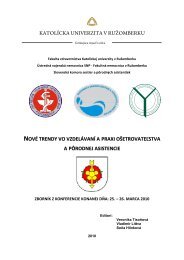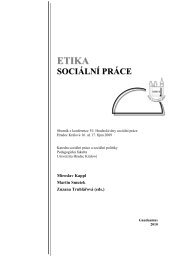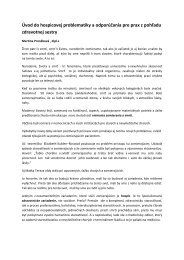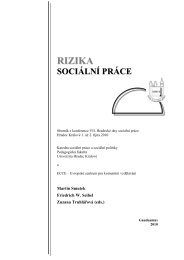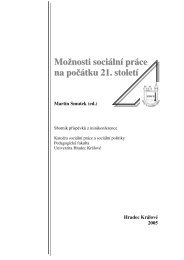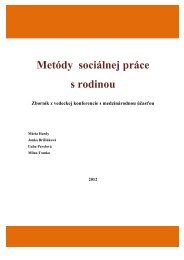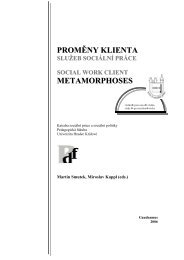Zmena klÃmy â možný dopad (nielen) na obyvateľstvo - Prohuman
Zmena klÃmy â možný dopad (nielen) na obyvateľstvo - Prohuman
Zmena klÃmy â možný dopad (nielen) na obyvateľstvo - Prohuman
You also want an ePaper? Increase the reach of your titles
YUMPU automatically turns print PDFs into web optimized ePapers that Google loves.
victims present with a wide range of associated diseases, from “slim disease” to<br />
pneumonia, Kaposi’s sarcoma and HIV associated dementia. There is an important<br />
interaction between HIV and tuberculosis (TB), itself a disease with many disguises<br />
and which in some cases may intensify in distribution because of a CC-related<br />
increase in crowding, poverty and an impairment of health services. Many<br />
patients with HIV develop active TB. More cases of active TB are likely to mean<br />
more transmission of this bacillus, to populations with and without HIV. This is<br />
also of relevance because of the increasingly high rate of multi-drug resistant TB,<br />
including among populations where HIV is common, such as in South Africa. Increased<br />
TB will exert an additio<strong>na</strong>l economic and public health burden.<br />
HIV is well recognised to exert a profound social and economic effect in vulnerable<br />
populations, with or without co-existing TB, through its disproportio<strong>na</strong>te<br />
impact on young adults, including many who would otherwise be highly economically<br />
productive. Though several other infectious diseases, including lower<br />
respiratory illnesses (LRIs), diarrhoea and malaria are also responsible for a high<br />
burden of disability-adjusted life years (DALYs), these mainly affect young children<br />
and infants. While it is well recognised that these diseases (especially malaria)<br />
also impede economic development and cause profound human suffering,<br />
their social and economic burden is lower than from AIDS in those countries with<br />
a high incidence and prevalence of HIV. MacKellar points out that, based largely<br />
on the availability of cost-effective means of HIV prevention, the Copenhagen<br />
Consensus of economists rated slowing the spread of HIV as the highest-priority<br />
intervention for sustai<strong>na</strong>ble development. MacKellar also points out that the special<br />
status given to HIV was made explicit by the WHO Commission on Macroeconomics<br />
and Health, which described the epidemic as a “distinct and unparalleled<br />
catastrophe” requiring “special consideration.” He further states that this view<br />
was bolstered by the joint World Bank–Inter<strong>na</strong>tio<strong>na</strong>l Monetary Fund Development<br />
Committee (2003), which in a survey of global public goods identified HIV<br />
control as an area “especially” in need of attention and action.<br />
In addition, the defining characteristic of HIV – its immunodeficiency – may<br />
have provided a pathway for the emergence of many other infectious diseases.<br />
Jones et al. speculate that the emergence of HIV contributed to the high rate of<br />
emerging infectious diseases, which they found peaked in the 1980s, the decade<br />
in which HIV started to affect large numbers of people. Climate change might also<br />
be considered another “charismatic” global problem. It too has protean manifestations,<br />
including heat waves, changed distributions of insects and the diseases<br />
they sometimes bear, altered patterns of drought and storm frequency and severity,<br />
sea level rise, increased oceanic acidity and changes to food security, through<br />
53





